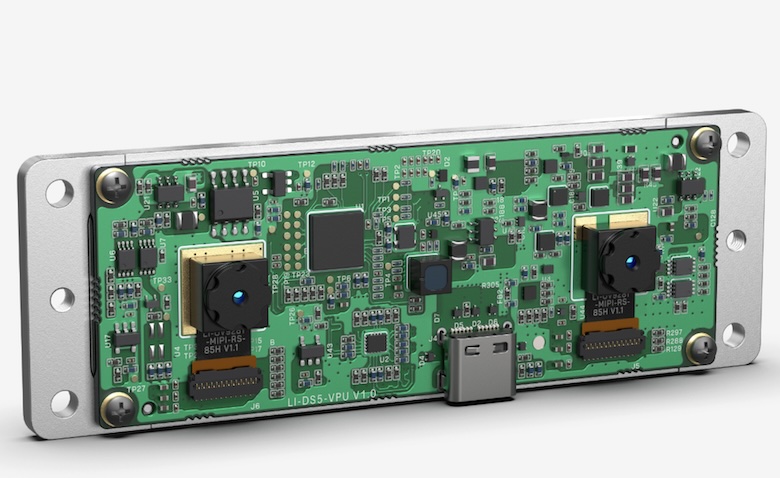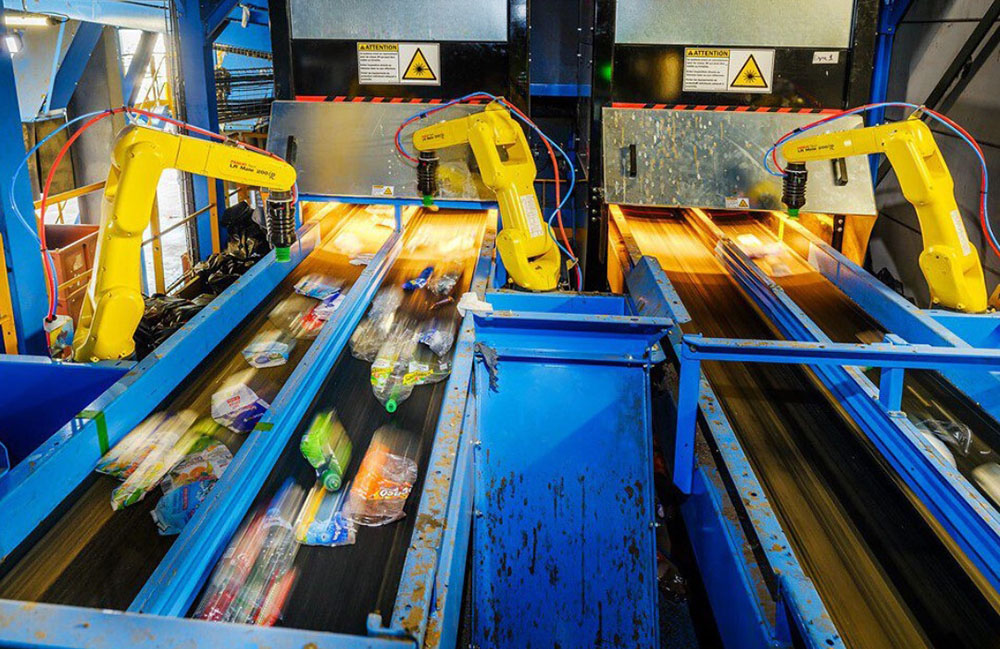By Steve Crowe | September 24, 2024

The new Intel RealSense D421 Depth Module. | Credit: Intel
Despite all the turmoil around Intel Corp., the company surprisingly expanded its line of Intel RealSense depth modules for robotics applications. Today, it introduced the entry-level Intel RealSense Depth Module D421.
The company said it’s designed to bring advanced depth sensing to a wider audience at an affordable price. The all-in-one stereo depth module is currently available for pre-orders for $800 per 10-pack. Pre-orders will ship in November, according to Intel.
Intel added that the new D421 is the first all-in-one module integrating the D4 vision processor with the optical module on the same board. The D4 vision processor does all depth calculations onboard, making this a low-power, platform-agnostic device, it claimed.
The D421 depth module offers a 75° × 50° field of view, a recommended range of 0.2 to 3 m (0.6 to 9.8 ft.), and 1 megapixel global shutter depth sensors.
Intel also said the D421 depth module features plug-and-play functionality and compatibility with popular development frameworks. It is supported by the Intel RealSense SDK 2.0 and works with a range of platforms and operating systems, including Windows, Linux, and Android.
The D421 is 95 × 32 × 10.18 mm (3.7 x 1.2 x 0.4 in.) in size (LxHxD) and uses a USB-c connection type. Intel said the D4 vision processor is an application-specific integrated circuit (ASIC) that can process up to 36.6 million pixels per second in a small footprint in real time.
The company asserted that the D421 is suitable for a variety of robots, including autonomous mobile robots (AMR), humanoids, robotic arms for picking applications, and more.
Intel said its line of camera modules offer customers closer integration and a more flexible form factor, as well as lower cost, in comparison with its depth cameras. The table below offers a quick comparison of Intel’s depth modules and processors:

Credit: Intel
Intel’s struggles
Intel has made several missteps over the past several years that sent its stock plunging. It has fallen significantly behind in the artificial intelligence race, trailing competitors such as NVIDIA and AMD, which have capitalized on the current hype around generative AI.
After a disappointing Q2 financial earnings report, Intel said it will be laying off 15,000 employees and halting non-essential work. However, the company has received some positive news the past few days.
It landed a deal to make AI chips for Amazon and announced a plan to spin off its foundry business. There are reports that Qualcomm wants to buy Intel, and that separately Apollo Global Management wants to invest up to $ billion in Intel.
Intel and Apollo have a pre-existing relationship. In June, the chipmaker sold Apollo an $11 billion stake in its Ireland manufacturing facility.
These financial woes are partially why it’s surprising to see Intel introduce a new depth module for robotics, which is a small part of Intel’s overall business. It’s also surprising because in August 2021, Intel had announced it was shutting down its RealSense division, catching many folks inside and outside of Intel by surprise.
However, it ultimately changed course and only stopped producing certain RealSense products.
The robotics industry has long been riding a roller coaster when searching for low-cost, high-quality depth sensing. It’s good to see Intel still focusing on robotics and not becoming another Microsoft Kinect or Project Tango.

 2 months ago
33
2 months ago
33









 English (US) ·
English (US) ·